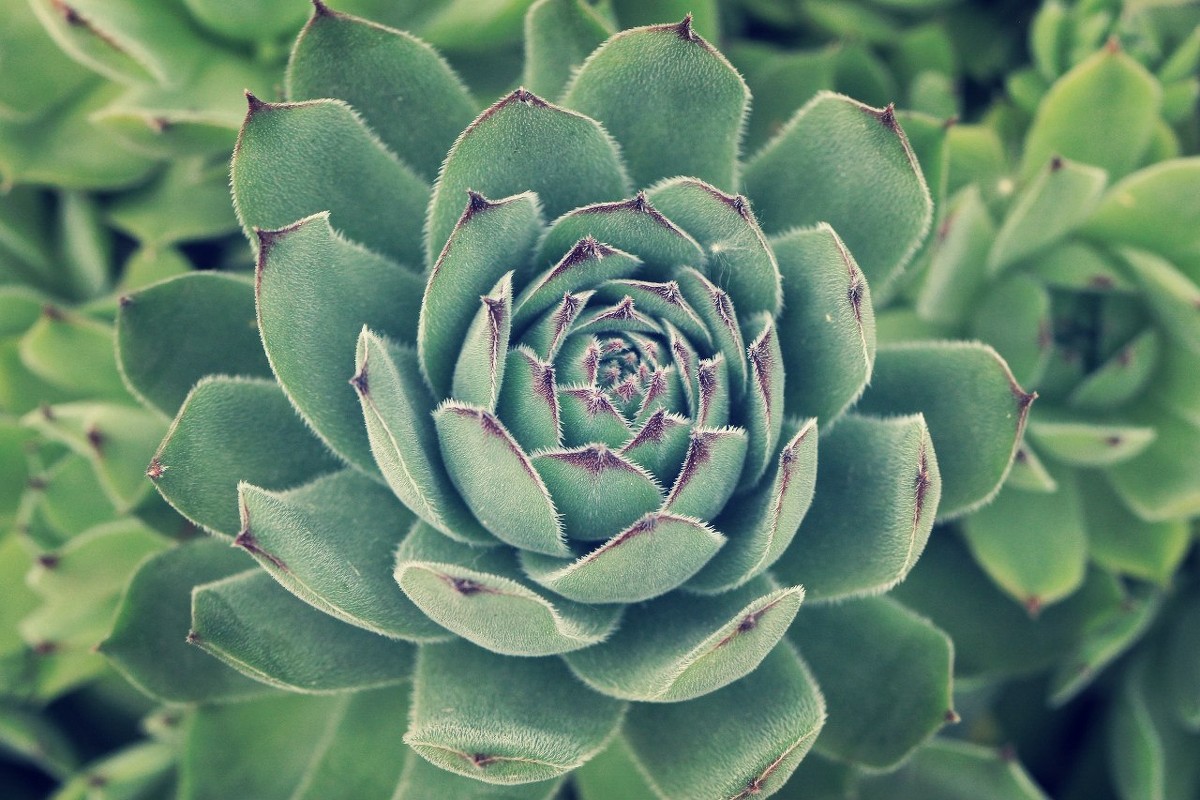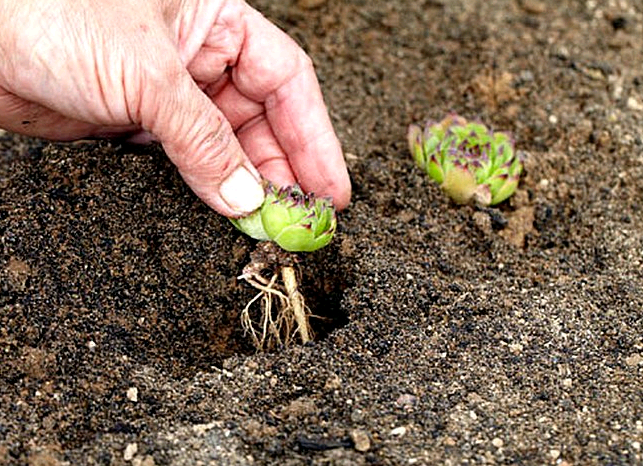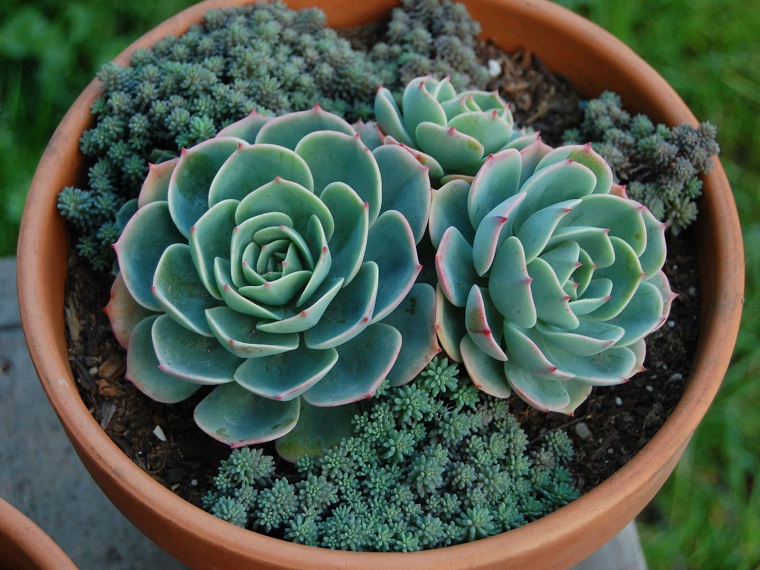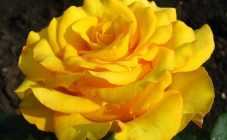Content:
The stone rose flower has several names: sempervivum (forever alive), rejuvenated, echeveria, hare cabbage. But only its real name fully characterizes its beauty and ability to survive in any conditions.
About succulents
Succulents are succulent plants that can store up to 90-95% of water in the leaves or stems. This allows them to survive in the desert and semi-desert, steppe, highlands, even in the salty soil of the sea coast.
Description of the stone rose
The name of the flower is due to the similarity of the fleshy leaves with rose petals. But, in comparison with an ordinary rose, this flower is unusually viable, strong as a stone. The plant survives on rocks, stony soils, sandstones, forest outskirts. The Latin name comes from 2 words: "semper" - "always" and "vivius" - "alive". The popular name of the flower is "tenacious". In nature, the plant grows in the Caucasus, Northern and Eastern Europe and Asia.
During the Middle Ages, Europeans had a superstition that the rosettes of a stone rose bestow the patronage of the deity Thor. According to the sign, a flower planted on the roof protected the home from lightning and thunder strikes. For this, he even received the name "thunder grass". At the same time, the succulent served to strengthen the roof, having the property of germinating wherever there was no tile.
Rubbing the cheeks with the leaves of the flower helped the girls regain their blush and look younger, so one of the common names for the flower was rejuvenating. For its compactness and similarity to the cabbage head, the plant is called "hare cabbage". Infusions and decoctions of the flower have a healing effect in the healing of wounds, diseases of the heart, lungs, and stomach.
Stone rose fits perfectly into landscape design:
- adjoins well with low flowers;
- decorates garden paths, borders and flower beds;
- creates a living, colorful blanket on the site;
- becomes part of the design garden composition.
Characteristic
Stone rose is a ground cover succulent, a low-growing perennial of the Tolstyankov family. Description of sempervivum:
- A short stem to which a spherical rosette with spirally attached leaves is attached. Some varieties are stemless. The rosette diameter reaches 15 cm.
- The leaves are spiky, oblong and very fleshy. May be covered with a waxy coating or pubescence, which helps to retain moisture. Leaf color: green, pink, silver, red, brown, sometimes there is a border.
- The root system is superficial or is represented by a strong rhizome. It recovers quickly, so the plant easily tolerates a transplant.
Types and varieties
The stone rose has about 700 varieties, 50 species are cultivated in Russia. Some of the most popular flower varieties:
- Roofing.
- Russian.
- Cobweb.
- Marble.
- Spherical.
- Limestone.
- Mountain.
- Caucasian.
- Wolfen.
- Gamma.
Agrotechnics
Landing
In the open field, a stone rose can be planted in the most inaccessible places. She will feel good in the space between stones, wide flowerpots, any pots and containers. The unpretentiousness of the flower is explained by its high resistance to any conditions: drought and severe frosts.
To get a rich shade of leaves, it is better to choose a well-lit place for planting a stone rose. In the shade, she will be pale. When grown at home, the pot should be kept on the southern windowsill, provide additional lighting.
Suitable soil for a flower is light, sandy. Drainage is required in the form of pebbles, expanded clay, fine gravel. Rejuvenated worse tolerates an acidic environment, so you should not add fertilizers. At home, a mixture of sand and peat mixed in a 3: 1 ratio, with the obligatory addition of drainage, is suitable.
A rocky rose is planted mainly by seedlings, since many daughter outlets are formed around it. No wonder the French gave her another name - "hen with chickens." In indoor growing, the "daughters" of the stone rose are separated in September, placed in separate containers.
Seeds are sown at the beginning of March. A week later, seedlings appear, which are transplanted to a permanent place in the first days of July.
Care
Despite the unpretentiousness of the stone rose, it is still worth paying attention to the correct agricultural technology:
- Watering the flower should be rare, once a week in the summer, if necessary - in the winter. Waterlogging of the soil, ingress of moisture into the outlets - all this causes rotting of the roots and leaves of the rose. You need to water at the root.
- Weeding should be regular and neat so as not to damage young outlets.
- Feeding the flower is not needed. Only after 3-4 years can you use a mixture for feeding cacti, while it is recommended to add crushed charcoal. You can use humus.
- There is no need to spray or wipe the flower leaves, as they have their own protection in the form of a film. Drops of moisture under the sun can cause burns.
- After flowering, it is recommended to remove the dried inflorescence to allow the flower to regain strength for the new season.
- The stone rose tolerates frost well under a snow shelter. To do this, it dries out in the fall, getting rid of excess moisture in the leaves. But recently planted, immature flowers should be covered with foliage or branches of coniferous trees.
Diseases and pests
The strong immunity of the stone rose helps it cope with most diseases and pests. But some insects can still harm the flower.
May beetle larvae eat long tunnels in the plant. You can save the young by replanting to another place and treating the soil with chemicals.
The decayed part of the flower must be cut, disinfected the plant, transplanted to another place. A rose with rotten roots should be destroyed to avoid contamination of healthy flowers.
Weeds can become the flower's worst enemies.They steal nutrients from him, retain moisture. Tall weeds shade the young, causing its slow death. Weeding should be regular.
Growing a stone rose is practically no hassle for its owner. At the same time, the flower decorates well any garden, office or room.















